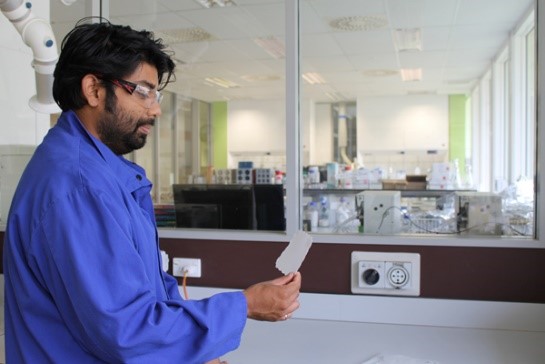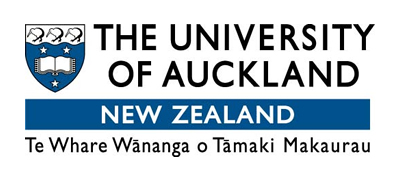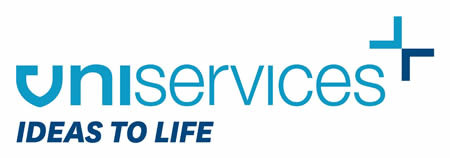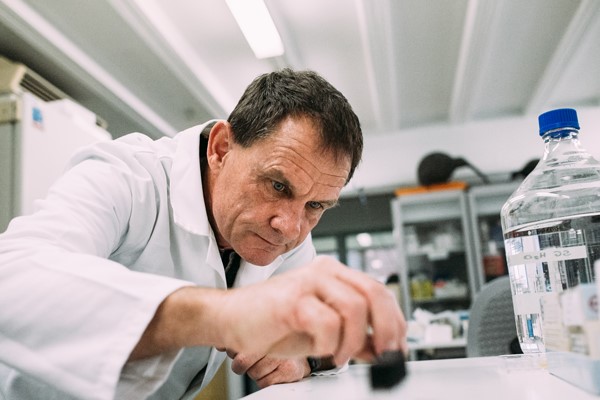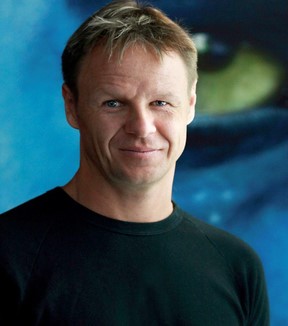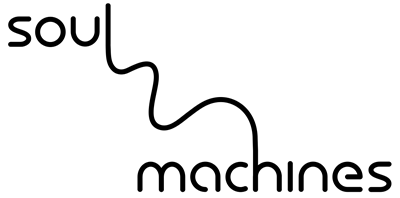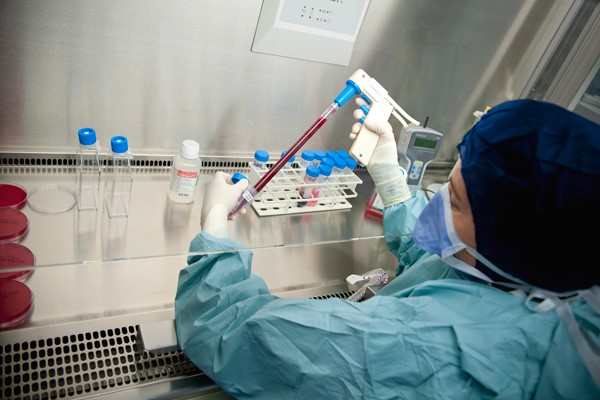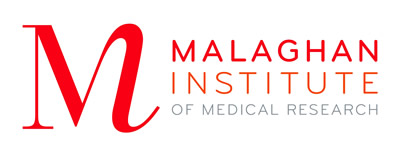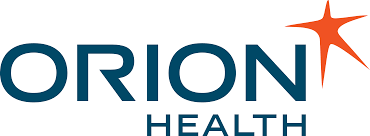2017 Awards Finalists
The KiwiNet Awards celebrate heroes in research commercialisation — those individuals and organisations whose best practice approach is changing the innovation landscape in New Zealand. We congratulate the 2017 finalists!
Norman Barry Foundation Emerging Innovator Finalists
This award recognises an upcoming entrepreneurial researcher who is making outstanding contributions to business innovation or is creating innovative businesses in New Zealand through technology licencing, start-up creation or by providing expertise to support business innovation.
 Dr Sadakat (Saad) Hussain
Dr Sadakat (Saad) Hussain
Growing New Zealand’s forest-based bioeconomy with packaging innovations
 Dr Geoff Rodgers
Dr Geoff Rodgers
Seismic damping solutions for buildings and joint implant diagnostics
 Dr Daniel Xu
Dr Daniel Xu
UVLens® Personal UV management and skin cancer prevention tool
Dr Sadakat (Saad) Hussain – Scion Research
Growing New Zealand’s forest-based bioeconomy with packaging innovations
Dr Sadakat (Saad) Hussain is a Project Leader (Packaging and Biomaterials) at Scion. Originally from Canada, Saad has a PhD in Chemical Engineering, with a focus on the mechanics of materials. A highly motivated problem solver with a passion for applied science, he is embracing the opportunity to transform his cutting edge science into significant potential for driving business innovation and producing economic returns for New Zealand.
Currently, Saad is helping Scion grow the forest-based bioeconomy with a project to improve the lifetime of corrugated packaging in supply chains. Creep deformation is an issue for every box in the supply chain and it costs multiple industries billions of dollars. Food can be packaged in boxes for a long time – some fruit is stored for up to a year, and frozen food for up to two years. In that time, many boxes will fail. Based on this need, Saad has established a solid revenue stream at Scion for testing commercial packaging for international companies, helping to solve the creep problem. Scion's WHITE (Weight, Humidity Intervals, Temperature and Experimentation) Room testing facility is the largest independent box testing facility in the world.
Saad is also working on the mechanics of foam properties – how strong they are, and how they feel – with funding from the Biopolymer Network Ltd. He is developing alternative environmentally-friendly composite plastic packaging materials and actively engaging with business to understand and meet their needs. His world-first 'Stretched Foamed Film' using PLA (polylactic acid), an industrially compostable plastic, is a thin film material 100 microns or less (similar thickness to a sheet of paper). The innovation is expected to revolutionise food labelling and packaging, such as yoghurt cartons and soft drink bottles, as PLA foams that are thin films are currently not available. Saad is working on enhancing the mechanical properties of the Stretched Foamed Film. PLA is compostable and foamed making it light weight and much leaner. This is exceptionally important in a market that is focused on driving down weight and thus production and transport costs. The Stretched Foamed Film is also opaque, and can be directly printed on without the need for pre-colouring, saving even more money.
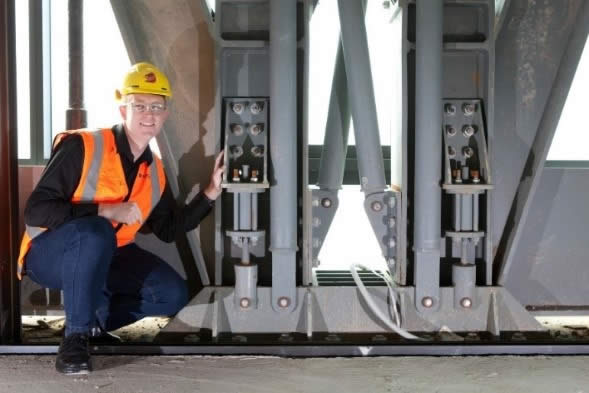
Dr Geoff Rodgers, Associate Professor, Mechanical Engineering Department, University of Canterbury – with mechanical seismic dampers
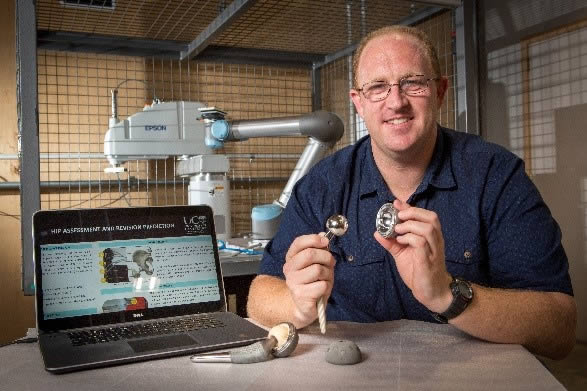
Dr Geoff Rodgers – with hip joint implants

Dr Geoff Rodgers – University of Canterbury
Seismic damping solutions for buildings and joint implant diagnostics
Dr Geoff Rodgers has a strong track record of working closely with industry to develop research outcomes with significant benefit to society. His research has applications in fields from seismic protection system for structures through to medical devices.
Geoff completed his PhD in seismic energy dissipation at the University of Canterbury in 2009, and then undertook a postdoctoral fellowship in medical device development at the University of Otago. In 2012 he returned to the University of Canterbury to take up an academic role, and is now an Associate Professor in the Mechanical Engineering Department.
Mechanical seismic dampers he developed to dissipate kinetic energy of seismic waves penetrating a building structure are in use in a low-damage Hospital complex in Christchurch. He is also working on other devices and deployment opportunities locally and internationally.
Geoff is also developing a new method for early detection of wear and tear of hip joint implants that monitors the sound vibrations transmitted from a patient's hip replacement implants. The acoustic emission monitoring system is a non-invasive sensing technique that records low-level vibrations emitted from the implant during patient motion that make it through tissue to the skin's surface.
By listening to the ultrasonic vibrations of the implant, it is possible to relate them to the condition of the implant, to help Orthopaedic surgeons predict impending failures and manage revision surgery. Early detection of wear and tear may provide opportunities for proactive intervention, reducing the severity of surgery and providing improved patient outcomes
Geoff's approach to technical development, across a range of industry fields, is always pragmatic and realistic, with uptake by industry being a major goal.
Dr Daniel Xu – Spark 64 & University of Auckland
UVLens® Personal UV management and skin cancer prevention tool
Dr Daniel Xu is on his way to becoming a highly recognised New Zealand innovator and entrepreneur, with his excellent research capability combined with strong business acumen. He is the inventor of a number of patents that have been licensed to StretchSense Limited, a company formed out of the Biometrics lab at University of Auckland, and is the co-founder and CEO of technology companies UVLens® and Spark 64 Ltd.
Daniel completed his PhD in Bio-Mechatronics Engineering from the University of Auckland in 2015, and is an Honorary Academic in University of Auckland's Bioengineering Institute.
While still studying for his PhD Daniel co-founded UVLens® in 2013 after his team won the National Finals of the Microsoft Imagine Cup. UVLens® provides digital information and tools to teach people about UV and sun safety. The solution is being developed by the team at Spark 64, an R&D company combining the fields of sensor technology, software applications and cloud computing.
Globally, 3 million people are diagnosed with skin cancer every year. UVLens® aims to make a difference starting from New Zealand, a country with one of the highest incidence rates, to address the long standing problem of over exposure to UV causing skin cancers.
The first release of UVLens® was designed specifically for pre-schools and other early childhood education centres. It provides engaging tools to educate young children and to instil sun smart behaviours early. It also provides teachers and parents with real time UV information, alerts and recommendations to help them keep the children safe as they enjoy their time in the sun. The UVLens® Weather Kit contains sensors and software to measure the local UV, temperature, rainfall, and more at a site. The technology integrates into mobile apps, websites, email and social media, making it truly scalable across the world.
In a partnership with Banana Boat sunscreen, over 100 UV sensors were installed around the country in 2014 to protect preschool children from the sun. The technology is also being used in the education, suncare and health insurance space.
Daniel was awarded the AMP National Scholarship in 2015 as one of 10 people doing great things in New Zealand. He has also attended the Stanford ignite programme in 2016.
Baldwins Researcher Entrepreneur Finalists
This award recognises an entrepreneurial researcher who has made outstanding contributions to business innovation or has created innovative businesses in New Zealand through technology licencing, start-up creation or by providing expertise to support business innovation.
 Professor Richard Furneaux
Professor Richard Furneaux
Carbohydrate chemistry delivers sweet success to NZ
 Professor Steve Henry
Professor Steve Henry
Bioactive paint: Kode™ Technology
 Dr Mark Sagar
Dr Mark Sagar
Emotionally intelligent avatars: Humanizing the interface between man and machine

Professor Richard Furneaux, Institute Director of the Ferrier Research Institute, Victoria University of Wellington
Professor Richard Furneaux - Victoria University of Wellington
Carbohydrate chemistry delivers sweet success to NZ
The successful combination of Professor Richard Furneaux's scientific nous and entrepreneurial spirit has generated tens of millions of dollars of economic activity for New Zealand over the past 25 years—a direct result of his own, and his team's, research endeavours.
Starting out as a synthetic chemist, today Richard leads a team of 40 world-class scientists as Institute Director of the Ferrier Research Institute at Victoria University of Wellington. Innovations from this team include the first New Zealand-developed drug to gain registration since the 1980s and a breakthrough synthetic vaccine to treat cancer, allergies and autoimmune diseases.
Richard's passion for New Zealand means that he is always looking for ways in which science can add value to the country—whether it's starting up a new business (Avalia Immunotherapies and GlycoSyn), or collaborating with world-renowned scientists such as Professor Vern Schramm at Albert Einstein College of Medicine in New York, to deliver a significant portfolio of licensed pharmaceutical candidates which could potentially generate millions for the New Zealand economy. Richard was involved in the synthesis of forodesine hydrochloride, the active ingredient in anti-lymphoma drug Mundesine®, licensed by BioCryst Pharmaceuticals Inc. Mundesine® has just been approved in Japan, making it only the second New Zealand invented drug compound to become a registered drug product.
A mentor to many, Richard's work is well recognised and highly respected by his peers and the business community; he has inspired many to take up the challenge of commercialising scientific discoveries during his own career.
Professor Steve Henry – Auckland University of Technology & Kode Biotech
Bioactive paint: Kode™ Technology
Professor Steve Henry is an academic with a difference. Like other professors, research is his professional life, but unlike many, commercialisation of that research is also integral to his position.
In 1996 he started the biotechnology company Kode Biotech, on the campus of AUT, to commercialise his biosurface engineering technology – Kode™ Technology.
The technology revolves around modifying surfaces, like those of cells. The only way to improve or change what cells do is to modify them. Until now, no scalable commercial method existed to safely modify cell surfaces, thus eliminating the potential for a plethora of valuable therapeutics and diagnostics. There are also many examples where solid surfaces interact with biology, like the metal surfaces on surgical implants and plastics in diagnostic analyses. However, attaching fragile biologicals and other compounds to these surfaces is difficult to achieve with current technologies.
Kode™ Technology is a powerful solution for both problems: The cassette design of Kode™ constructs allows us to optimize the attachment of almost any bioactive onto almost any surface, in a few minutes.
Kode™ Technology has many applications. The reason it is attracting attention is because it is the only single-step and fast technique that can modify any living cell without damaging it. Biotechnology and pharma companies are licensing the platform technology to aid their development of new therapeutics, diagnostics, and consumer products.
There are several Kode-based products in the R&D and diagnostics markets generating revenue. The UK company Agalimmune licensed the technology as a therapeutic in 2015 in a deal that could return over US$38 million in milestone payments and ultimately significantly more in annual royalties. Agalimmune's cancer immuno oncotherapeutic product is entering human clinical trials in Q1 2018. Other prototype products in different fields-of-use are being evaluated or are in development for market release.
As the CEO of Kode Biotech and Professor in the AUT Centre for Kode Technology Innovation Steve is fully immersed in the true commercial environment, taking research from concept all the way through to product. It was this blend of business and science that saw him win the Innovation Council's Supreme Innovator of the Year Award in 2015. Kode Biotech also recently secured a residency at Johnson & Johnson Innovation JLABS in Houston, the first company in Australasia to do so.
Dr Mark Sagar - University of Auckland and Soul Machines
Emotionally intelligent avatars: Humanizing the interface between man and machine
If you've seen Avatar, King Kong or Spider-man 2, you've seen the work of Auckland-based computer scientist and now company founder and CEO, Dr Mark Sagar. The two-time Academy Award winner, a pioneer in the world of CGI, is now capturing world-wide attention with his emotionally intelligent avatars.
In 2011 Dr Sagar returned to the University of Auckland to head up the Laboratory for Animate Technologies based in the Auckland Bioengineering Institute (ABI). With his engineering and research team he developed two technologies: Facemaker designed to rapidly and reliably create avatar faces based on real human anatomy and physiology, and Baby X, his first avatar. Baby X technology provides an emotional and social reasoning platform to existing and developing intelligence in the Artificial Intelligence industry.
Emotional Intelligence is at the heart of forming engaging interactions with people. By adding El to avatars, it also gives them the ability to connect and engage users on an emotional level. Dr Sagar's avatars can recognise emotional expression by analyzing facial expressions and vocal expression in real time. The avatars have an unprecedented level of human-like expression and can communicate to the user with both subtle and dramatic emotional responses. The avatar can detect a change in the emotional state of the person talking to it, and it can be met with an appropriate emotional response from the avatar - which may be expressed both verbally and non-verbally. EI is the sum of interaction between a person and an avatar and can learn through experience as with AI.
Dr Sagar's intelligent, emotionally responsive avatars caught the attention of investors in 2016. Built on the Baby X technology Soul Machines was formed as a result of a $7.5MUS Series A investment led by Hong Kong-based Horizons Ventures, a leading artificial intelligence and virtual reality investor. Soul Machines is already turning human-machine interaction on its head by augmenting and enriching the user experience for Artificial Intelligence (AI) platforms.
In addition to his role as CEO of Soul Machines, Dr Sagar continues to head the Bioengineering Institute's Lab for Animate Technologies at the University of Auckland.
MinterEllisonRuddWatts
Research & Business Partnership Finalists
This award recognises the deeply embedded working relationship between a research organisation and business that delivers significant commercial value for New Zealand.
 Defence Technology Agency & MetOcean Solutions
Defence Technology Agency & MetOcean Solutions
SurfZoneView - A Software Safety Tool For Beach Landings
 Malaghan Institute & Hunan Zhaotai Medical Group
Malaghan Institute & Hunan Zhaotai Medical Group
Commercialising novel cancer therapies from China to take to the world
 University Of Auckland, Orion Health & Waitemata DHB
University Of Auckland, Orion Health & Waitemata DHB
Empowering data-driven healthcare solutions through a public-private research partnership
Defence Technology Agency and MetOcean Solutions
SurfZoneView - A Software Safety Tool For Beach Landings
Moving people and equipment from the sea to the land is one of the most complex tasks completed by the New Zealand Defence Force (NZDF). Amphibious operations are required when port facilities are not available, most commonly when supporting our neighbours in the Pacific or New Zealanders at home after natural disasters such as Cyclone Winston and the Kaikoura earthquakes. The safety and success of amphibious landings are largely dependent on surf conditions.
The SurfZoneView tactical decision aid was developed by MetOcean Solutions in partnership with the Defence Technology Agency (DTA) to support beach landing operations conducted by the NZDF. The DTA is the main provider of research, science and technology support to the NZDF and the Ministry of Defence.
In humanitarian and disaster relief safe and efficient transfer of people and equipment is required. SurfZoneView is a fast, reliable and simple software tool that can be used by command teams to plan and execute safe and efficient amphibious and nearshore operations. Based on high quality hydrodynamic modelling, the program allows a rapid and accurate assessment of the waves and currents at any coastal location. Clear, easy-to-use maps of the nearshore conditions are displayed, and tools to assist with operational decision making provided.
MetOcean Solutions, NZDF and DTA have established a license agreement and royalty revenue stream between the parties, and the NZ Navy has unlimited use rights. Internationally, several navies have indicated interest in purchasing the tool.
SurfZoneView software uses the XBeach model to provide a robust prediction of nearshore waves and currents to enable a go – no go decision.
Malaghan Institute and The Hunan Zhaotai Medical Group: Trialling Car-T Cell Therapies in New Zealand
Commercialising novel cancer therapies from China to take to the world
The Malaghan Institute (MIMR) has partnered with the Hunan Zhaotai Medical Group (HZMG), a Chinese company developing novel CAR-T cell immunotherapies, in order to trial and commercialise HZMG's substantial pipeline of novel cancer treatments. CAR-T cell therapies are one of the most exciting new fields in immuno-oncology (engineering patients' immune cells to treat their cancers), attracting billions of dollars of investment worldwide.
Initial clinical trials indicate that HZMG have a competitive advantage over the other leading CAR-T cell programmes, based on a proprietary structure offering efficacy at lower doses. This could translate to improvements in both safety of the treatment, and the time and cost of manufacture.
The rights for this international commercialisation is held by a jointly owned company based in NZ. MIMR has capitalized on its expertise and experience in the cancer immunotherapy space, translating this into part ownership of a company with the potential to offer significant new value to New Zealand's economy, including: exposure of MIMR's capability and reputation internationally, attracting Foreign Direct Investment; establishment of a substantial biotech company that can attract further investment; establishment of a Contract Manufacturing Organisation; wealth creation through capital returns on the IP; creation of high salaried jobs; and provision of cutting-edge immunotherapies to New Zealand patients.

University Of Auckland, Orion Health and Waitemata District Health Board: Precision Driven Health
Empowering data-driven healthcare solutions through a public-private research partnership
Precision Driven Health (PDH) is a seven-year NZ$38m research partnership which improves health outcomes through data science. It brings together Orion Health, Waitemata District Health Board and the University of Auckland with support from the Ministry of Business, Innovation and Employment. More commercial partners, healthcare providers and academic institutions will join as the partnership continues.
PDH positions New Zealand at the forefront of the global transformation in healthcare known as precision medicine, enabled when all information about an individual – including his or her genetic and social profile – is available as part of an electronic health record, accessible by clinicians in real time.
PDH's research programme harnesses New Zealand's unique combination of existing electronic healthcare data and world-class research capability to enable the development of data-driven healthcare solutions that can be applied globally. These findings are already a key contributor to the development of the product roadmaps of its commercial partners. In the case of Orion Health, PDH's research programme feeds directly into enabling its Amadeus precision medicine platform to manage and analyse large volumes of data from a variety of sources, and then present those insights back to healthcare professionals and consumers in real time.
PwC Commercial Deal Finalists
The commercial award celebrates excellence in research commercialisation delivering outstanding innovation performance and the potential for generating significant economic impact for New Zealand.
 VicLink - Biocryst
VicLink - Biocryst
A New Zealand – US alliance generating commercial profits
 ESR - STRmix™
ESR - STRmix™
Unravelling DNA mixtures to solve crime
 Uniservices - Soul Machines
Uniservices - Soul Machines
Humanizing the interface between man and machines

Professors Peter Tyler and Richard Furneaux at Victoria’s Ferrier Research Institute who first synthesised forodesine hydrochloride, the active ingredient in anti-lymphoma drug Mundesine®
VicLink: Licensing Medical Drug Compounds from Victoria University to Biocryst
A New Zealand – US alliance generating commercial profits
The Ferrier Research Institute at Victoria University of Wellington has one of the most substantial track records in New Zealand of developing new medical drug compounds and, in close working relationship with partners in the pharmaceutical industry, transitioning these through the complex clinical development pathway to market.
Their most successful commercial deal (in conjunction with partners from Albert Einstein College of Medicine in New York), is a 16-year relationship with US NASDAQ-listed company BioCryst Pharmaceuticals, Inc. Under this licensing deal, four generations of novel compounds (covered by over 160 granted patents) have yielded six lead drug candidates with applications as diverse as Cancer, Gout, Psoriasis, Transplant Rejection and Malaria, as well as yielding potential treatments for Ebola, Zika and Marburg viruses.
One of the compounds, 'forodesine hydrochloride' is the active ingredient in a new oral drug, called Mundesine®, which treats patients with a type of lymphoma called peripheral T-cell lymphoma (PTCL)—a group of aggressive diseases that accounts for 10 to 15 percent of all cases of non-Hodgkin lymphomas. Japan has just approved Mundesine®, making it the first country to approve this an anti-lymphoma drug. This is only the second New Zealand invented drug compound ever to successfully become a registered drug product. Mundesine® was exclusively licensed to BioCryst Pharmaceuticals Inc., by Albert Einstein College of Medicine and Viclink, Victoria University's commercialisation office.
The relationship with BioCryst has yielded significant commercial benefit to New Zealand, the flow on creation of research jobs, and the establishment of a new locally owned cGMP manufacturing business GlycoSyn, extending the value chain captured by the deal and resulting in a significant additional long-term benefit to New Zealand in the area of high value manufacturing of pharmaceuticals.
Photo Caption: Professors Peter Tyler and Richard Furneaux at Victoria's Ferrier Research Institute who first synthesised forodesine hydrochloride, the active ingredient in anti-lymphoma drug Mundesine®
® MUNDESINE is a registered trade mark (in Japan) of Mundipharma AG.
ESR: STRMIX™
STRmix™: Unravelling DNA mixtures to solve crime
STRmix™ is an "expert software system" designed by researchers at ESR and Forensic Science South Australia (FSSA), used by DNA reporting analysts for the interpretation of forensic DNA profiles, with particular application to complex DNA mixtures with no restriction on the number of contributors.
The concepts applied and the way that the system works are able to be understood by DNA scientists with an appropriate background in DNA statistics and are able to be explained in court. This is critical for the acceptance of such an approach within the criminal justice system. Answers delivered using a "black box" technology are unlikely to be allowed in court proceedings.
The first commercial version of STRmix™ was made available in January 2014, and instantly attracted significant international attention. STRmix™ has had strong sales into foreign markets and ESR have established a strong potential sales pipeline, indicating many potential buyers looking to take up the STRmix™ system.
University of Auckland and Uniservices: Soul Machines
Soul Machines: Humanizing the interface between man and machines
In 2011, UniServices and The University of Auckland used the Vice Chancellor's Strategic Hiring Fund to provide Auckland and MIT Alumnus Dr Mark Sagar, a two-time Academy Award winner, with the opportunity to leave his role at Weta Digital and return to the University.
Dr Sagar joined the Laboratory for Animate Technologies based in the Auckland Bioengineering Institute (ABI), University of Auckland. With his engineering and research team he developed two technologies: Facemaker designed to rapidly and reliably create avatar faces based on real human anatomy and physiology, and Baby X, the first avatar created by Dr. Mark Sagar. Baby X technology provides an emotional and social reasoning platform to existing and developing intelligence in the Artificial Intelligence industry.
In 2012 the first long term research contract was secured and UniServices invested in the technology. UniServices also managed research contracts, the patent portfolio and market validation. This enabled the lab to grow and develop both technologies.
In 2016, Hong Kong based Horizons Ventures was introduced to the technology on a tour of the University and was so impressed the team made the decision to invest almost immediately. A $7.5 million USD Series financing round led by Horizons Ventures with Iconiq Capital, the University's biggest Series A fund raising deal to date, launched Soul Machines, built on the technology behind Baby X.
As a result of the investment, Dr. Sagar became the CEO of Soul Machines and his research team now make up the newly formed Soul Machines brand. Auckland UniServices reassigned ownership of all Intellectual Property and associated research contracts to Soul Machines in return for a shareholding in the new company. Dr Sagar continues to head the Bioengineering Institute's Lab for Animate Technologies.
The investment will allow Soul Machines to deliver on its vision of humanizing technology to create intelligent and emotionally responsive, human-like avatars that augment and enrich the user experience for customers and markets adopting Artificial Intelligence-based platforms.


